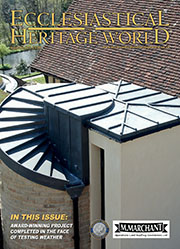Cutting corners costs more: lessons from ECO4 for the conservation retrofit sector
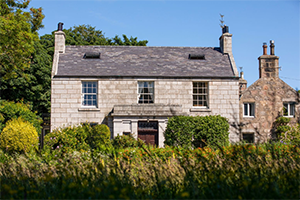 When the government launched its latest wave of retrofit initiatives, from the Energy Company Obligation (ECO4) to the Great British Insulation Scheme, the goal was admirable: improve the energy efficiency of the nation’s housing stock and accelerate progress towards net zero. Yet, the recently published audit findings paint a very different picture. Paul Trace, director of Stella Rooflight, explains.
When the government launched its latest wave of retrofit initiatives, from the Energy Company Obligation (ECO4) to the Great British Insulation Scheme, the goal was admirable: improve the energy efficiency of the nation’s housing stock and accelerate progress towards net zero. Yet, the recently published audit findings paint a very different picture. Paul Trace, director of Stella Rooflight, explains.
According to data analysed by Refurb & Retrofit, an astonishing 92% of external wall insulation installations inspected under ECO4 were found to have major technical non-compliance issues, with 27% of internal wall insulation projects suffering similar failings. In some cases, poor workmanship or inappropriate materials have left homeowners facing damp problems, trapped moisture, and damaged building fabric, the very issues these schemes were meant to prevent.
These numbers are shocking, but not surprising. They are the predictable result of a system designed around volume rather than quality, a culture of box-ticking, subcontracting and cost-cutting that prizes speed and budget compliance over craftsmanship and accountability.
And nowhere are the consequences of that culture more dangerous than in the world of heritage retrofit.
The danger of “cheap wins” in conservation work
Heritage and traditional buildings form a vital part of the UK’s built environment, representing not just architectural value but cultural identity. Yet these structures are often among the hardest to retrofit successfully. Their construction methods, materials, and moisture behaviour differ fundamentally from modern buildings, and their aesthetic integrity is protected by planning and conservation controls for good reason.
When you apply the same “one-size-fits-all” mentality that has failed so dramatically under ECO4 to this type of building, the results can be catastrophic.
I have seen countless examples where value-engineering, (the polite industry term for cutting corners!), has stripped a project of its integrity. A conservation-area roof converted with standard off-the-shelf aluminium rooflights; a listed barn punctured by PVC imitation products; stainless steel replaced with mild steel to “save a bit on the budget”. These might look like small changes on paper, but in practice they often compromise both the building’s performance and its authenticity.
Once you introduce the wrong material or detailing into a heritage roof, you change its entire behaviour. Moisture movement, expansion and contraction, corrosion, and even colour mismatch can all affect how that element performs and how it weathers over time. In conservation work, what may seem like a cost saving often leads to higher long-term repair costs, and sometimes irreversible damage.
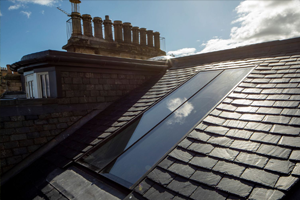 Lessons from ECO4: systems without scrutiny
Lessons from ECO4: systems without scrutiny
The ECO4 audit results are a warning about what happens when oversight, competence, and accountability are diluted.
The retrofit sector has become littered with acronyms, schemes and certifications that promise quality assurance but often deliver little more than bureaucracy. Installers rush to meet volume targets; assessors approve designs remotely; and contractors under price to win work, relying on substitutions and short cuts to recover margins. The outcome is predictable, systemic underperformance.
That same pattern occurs in parts of the construction and heritage sectors whenever decision-makers prioritise upfront savings over long-term value.
For instance, substituting a properly engineered 316L stainless-steel conservation rooflight for a cheaper mild steel or aluminium imitation might trim a few hundred pounds off a specification. But over the lifespan of the building, the consequences are clear: corrosion, water ingress, failed seals, discolouration, and in many cases, replacement within a decade. In contrast, a correctly detailed and installed stainless-steel unit can last the lifetime of the building with minimal maintenance.
It’s a textbook example of what economists call false economy, and one that the ECO4 report has just demonstrated on a national scale.
Heritage retrofit demands skill, not shortcuts
True conservation is about more than visual replication. It’s about respecting a building’s materials, structure, and performance, and intervening in ways that preserve rather than undermine them. That demands knowledge, skill and time.
Unfortunately, those are precisely the things that are hardest to account for in procurement frameworks designed around lowest cost. When funding models or tender criteria reduce heritage retrofit to a tick-box exercise, the industry inevitably responds with standardised, lowest-price solutions.
Yet, heritage buildings rarely conform to standard. Their roof pitches, joist spacing, or internal liners might all vary subtly, meaning that a “standard size” or “universal fit” product rarely integrates properly. That’s why bespoke manufacturing remains essential in conservation work. A handcrafted rooflight, built precisely to fit the existing structure, respects the fabric of the building and avoids the need for invasive alterations that compromise integrity.
There’s a craft dimension too. When installers are trained in heritage methods, traditional leadwork, correct flashing detailing, or the use of breathable finishes, the results speak for themselves. But when untrained contractors attempt to install conservation features using modern methods or incompatible materials, the failures may take years to surface, long after the project has been signed off.
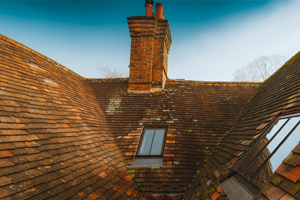 The hidden costs of “value engineering”
The hidden costs of “value engineering”
The phrase “value engineering” was once about intelligent design optimisation. Today it’s often shorthand for “how can we make it cheaper?”
On a spreadsheet, replacing a bespoke stainless-steel rooflight with an imported aluminium version might look like sensible rationalisation. To a client unfamiliar with the materials, both may appear similar in shape and function. But the performance differences are profound.
Aluminium, particularly in coastal or exposed locations, is highly susceptible to corrosion when coatings fail. Condensation within roof cavities can accelerate degradation, leading to frame blistering, leaks, and staining. From the ground, these defects might appear as minor blemishes; up close, they often reveal serious water ingress and decay around rafters or plasterwork.
In contrast, marine-grade stainless steel offers exceptional resistance to corrosion, even in harsh environments. Combine that with proper glazing specification, such as self-cleaning, solar-control glass, and a building gains not just durability but enhanced comfort and sustainability.
That’s the irony of cost-cutting: by stripping away quality materials, you often increase a building’s whole-life carbon footprint, maintenance requirements and replacement frequency. It’s the polar opposite of what a sustainable retrofit should achieve.
Trust, craftsmanship, and cultural change
If there’s one positive message to take from the ECO4 revelations, it’s that scale without standards doesn’t work. Ambitious sustainability goals are meaningless unless the delivery mechanisms are grounded in competence, craftsmanship, and trust.
For heritage and conservation buildings, those values are already embedded in best practice. Conservation officers, architects, and specialist manufacturers understand that longevity and authenticity go hand in hand. But for this ethos to survive, clients and contractors need to resist the temptation to “do it cheaper”.
Retrofit must evolve from being seen as a commodity to being understood as a craft, one that values durability, design integrity, and technical excellence.
At Stella Rooflight, we’ve built our business around that principle. Every rooflight we make is individually manufactured to order, using 316L stainless-steel frames, hardwood liners, and glazing options selected for the building’s specific needs. That approach isn’t about luxury; it’s about doing things correctly. In conservation work, correctness is sustainability, because it ensures the building, and its components, last for generations.
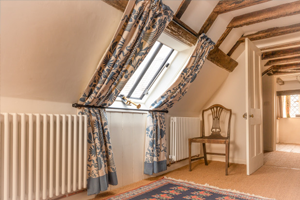 A call for quality over quantity
A call for quality over quantity
The failures of ECO4 and the Great British Insulation Scheme should be more than a cautionary tale, they should be a turning point.
Retrofit, whether for energy efficiency or conservation, is not a numbers game. It’s a stewardship responsibility. If we are serious about decarbonising Britain’s building stock, we must stop treating retrofit as a race to the bottom.
Architects and specifiers have enormous influence here. Every time a specification retains the correct heritage material rather than an imitation, it sends a signal that quality matters. Every time a practice chooses a trusted local specialist rather than the cheapest national installer, it helps rebuild the culture of competence our sector so urgently needs.
Because in the end, whether you’re insulating a post-war terrace or restoring a Georgian farmhouse, the same truth applies: cutting corners always costs more.
And for heritage buildings, those costs are not just financial, they are cultural, architectural, and irreversible.
To find out more about genuine conservation rooflights for your project contact the Stella Rooflight team on 01794 745445 or email This email address is being protected from spambots. You need JavaScript enabled to view it.









